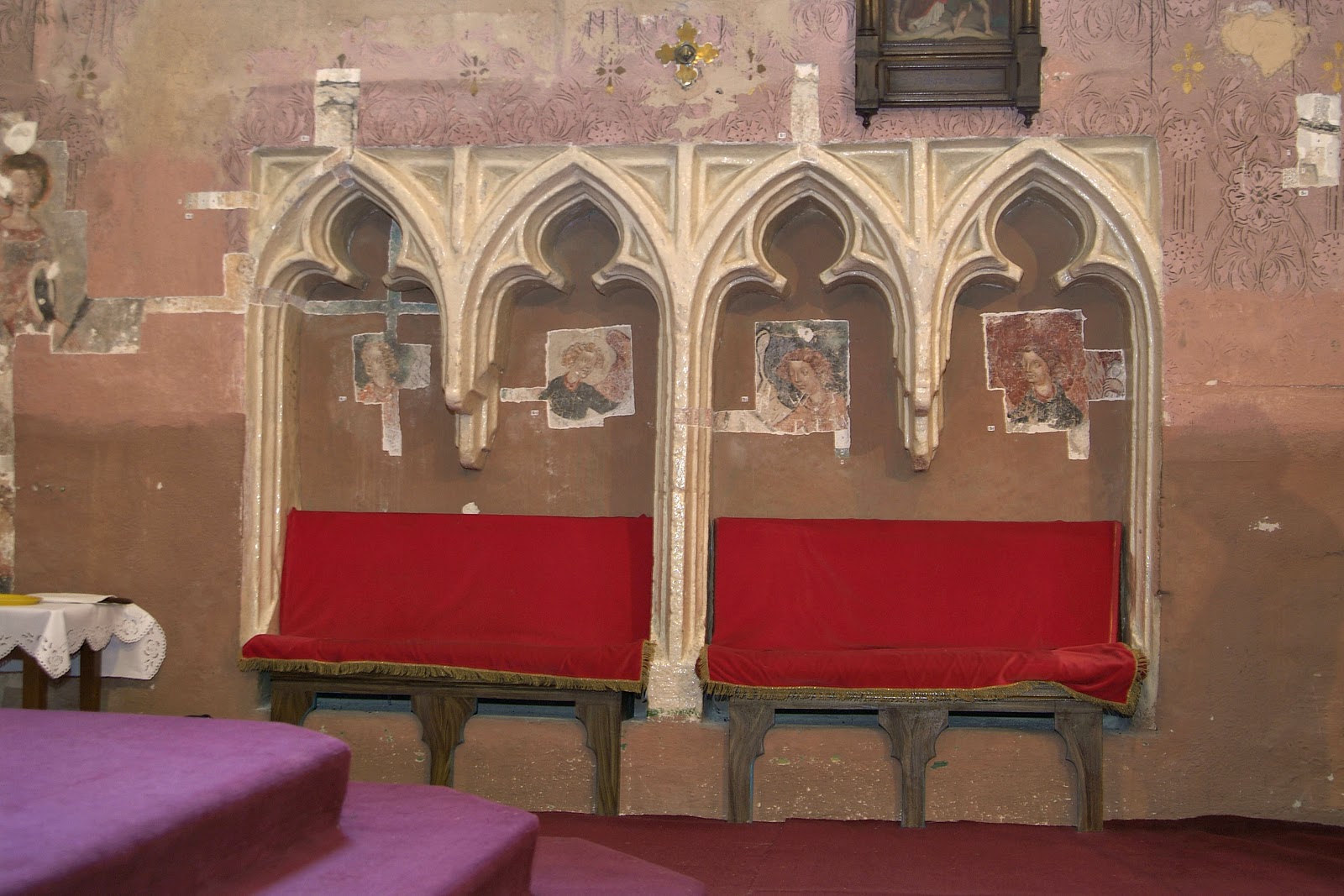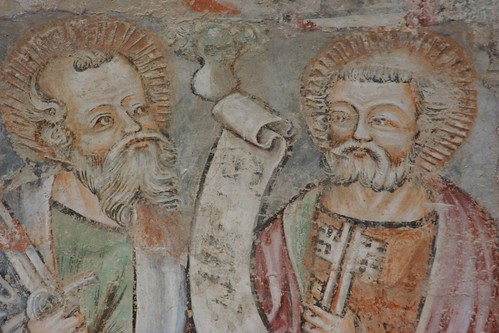During the last five years, I wrrote on various subjects on this blog, including the discoveries of treasure hoards and wall paintings, interesting exhibitions and new publications, museum collections and organizational changes and many others. The beginning of a new year seems like a good time to re-visit some of these topics, and to give a quick update on some of the news I reported. Here, then, is a medieval news update, focusing on some of the most popular topics on the medieval Hungary blog.
Wiener Neustadt treasure hoard published
![]()
The book describes the discovery of the treasure, and provides an exhaustive survey of the objects, including a detailed techical analysis of the materials, as well as studies on the art historical and cultural significance of the treasures. A catalogue of all the objects and an extensive photographic documentation is also included in the book. On the
publisher's website you can browse the beginning of the book, and there are also a
number of photos available (this is the source of the image above). A smaller publication, a brief introduction to the treasure, has also been published.
Nikolaus Hofer, hrsg.: Der Schatzfund von Wiener Neustadt. Horn - Wien, Verlag Berger, 2014. 496 pp., ISBN: 978-3-85028-636-7
Goldsmith works from the Herzog collection on view at the Hungarian National Museum
Another treasure collection, goldsmith objects once in the collection of Baron Mór Lipót Herzog, surfaced at a New York auction a few years ago, as
I reported also in 2011. It has now been revealed that the mysterious buyer of the objects at the sale was the State of Hungary, and the objects have been placed in the National Museum. After three years, in late 2014, the collection has been put on view in a special exhibition at the museum (which is open until January 25, 2014). No catalogue has been published, and there is no information available on the website of the museum - but a photo gallery is available on the website of the Hungarian state news agency, hirado.hu, by clicking on the
image on this page. A total of 32 pieces entered the museum, all of which at one time belonged to Mór Lipót Herzog, who passed away in 1934. The pieces have been recorded earlier as wartime victims of looting, and their whereabouts were unknown until the New York sale.
Transylvanian goldsmith works from the former Herzog collection - Hungarian National Museum, on view until January 25, 2015. For more information (in Hungarian),
visit Obeliscus, an online journal on the early modern period.
Further excavations at the Inner City Parish Church in Budapest
One of the most important things I was able to report on was the discovery of a beautiful 14th century fresco of the Virgin and child, right in the center of Budapest. I wrote several posts on the fresco and on the church as well. My brief report on the find (see
part I and
part II) was supplemented by a report on the use of
Hungarian azurite and another on the
first scholarly publications of the frescoes. During the last two years, work continued on and around the church. The exterior of the sanctuary was fully cleaned and restored, and there were excavations carried out by the Budapest History Museum around the church. During 2014, these excavations - lead by Eszter Kovács - continued inside the church, revealing centuries of history beneath the pavement. For much of last year, the wonderful view you can see on the photo below welcomed visitors to the church. Some of these underground tunnels and parts of the crypt had been accessible before, but the excavations helped clarify the different construction periods of the church, ranging from the Romanesque period to the Baroque. You can see and read more about the excavations in
this article from műemlékem.hu (again, in Hungarian). For a more detailed report of the excavations carried out around the church in 2010-2011, you can read an
article by Eszter Kovács.
Spectacular find at Siklós castle
![]()
I wrote here earlier about the important conservation and restoration work going on at the castle of Siklós, which had resulted in a number of important finds. During October 2014, György Bartos, who is leading the survey and research of the building, discovered an almost intact relief of the Man of Sorrows, which was built into the exterior wall of the castle. The relief almost certainly comes from the chapel of the castle, where it once served as the crowning piece of the sacrament house. It dates from the 15th century, from the period when the Garai family owned the castle (and thus dates from before the completion of the late Gothic sanctuary of the chapel, which was built between 1507-1515). The relief was likely built into the wall of the western wing of the castle after 1543, when the castle was occupied by the Ottoman Turks, and when the furnishings of the chapel were destroyed. Sinan chaus, the official and eyewitness chronicler of the 1543 Turkish campaign, relates the events of the siege in detail. He describes how after the castle fell, “the anatoli kazi-asker also went into the castle, and as he was walking up and down, he accidentally was led into the church of the castle, where he saw that the idols of the cursed are still in their former, intact shape. Seeing this, he immediately grabbed a pole, and first he broke the right arm of the idol known as Isa (Jesus), and then all the other symbols of unbelief, all the idols and statues, as many as there were, he all knocked down and broke. Then he returned to his tent.”
Knowing this, as well as the passage of almost 500 years since these events, the intact state of the relief - even traces of the original coloration survive - makes the discovery quite remarkable. The high quality of the relief is also notable and urges for further study. I thank György Bartos for the photo above - for more photos, you can have a look at this
Hungarian-language report on the website of the National Heritage Center, which oversees the research (the Center is actually defunct as of Dec. 31 - in case their website is not available any more, the report and photos can also be found on
mult-kor.hu).
Restoration of Krasznahorka castle in progress
Another medieval castle, the castle of
Krasznahorka / Krásna Hôrka in Slovakia was also in the news, especially because of a catastrophic fire which destroyed its roof in the Spring of 2012 (
my blog post on the fire remains the most popular article of this site, with over 5000 page views). The fire destroyed the entire roof, damaged parts of the walls and part of an exhibition opened in 2011 in the upper level of the castle, which belongs to the state Slovak National Museum. After immediate action to preserve the artworks inside the castle, it emerged that about 90 % of the objects survived without major damage. Restoration of the castle began as soon as it was possible.
The Slovak Spectator reported that two years after the fire, in March 2014, the reconstruction of the castle has cost more than 1.17 million Euros. The cost of the restoration is covered by insurance, while money collected in a public fundraising campaign is being used to restore damaged objects. The second phase of the restoration was finished by the end of last year, with lower parts of the castle under new roof - but there is still more to be done before the castle can be reopened to visitors. Work continues on the upper parts of the castle, and can be followed on the
facebook page dedicated to the castle.




.jpg)
.jpg)


































.jpg)



































